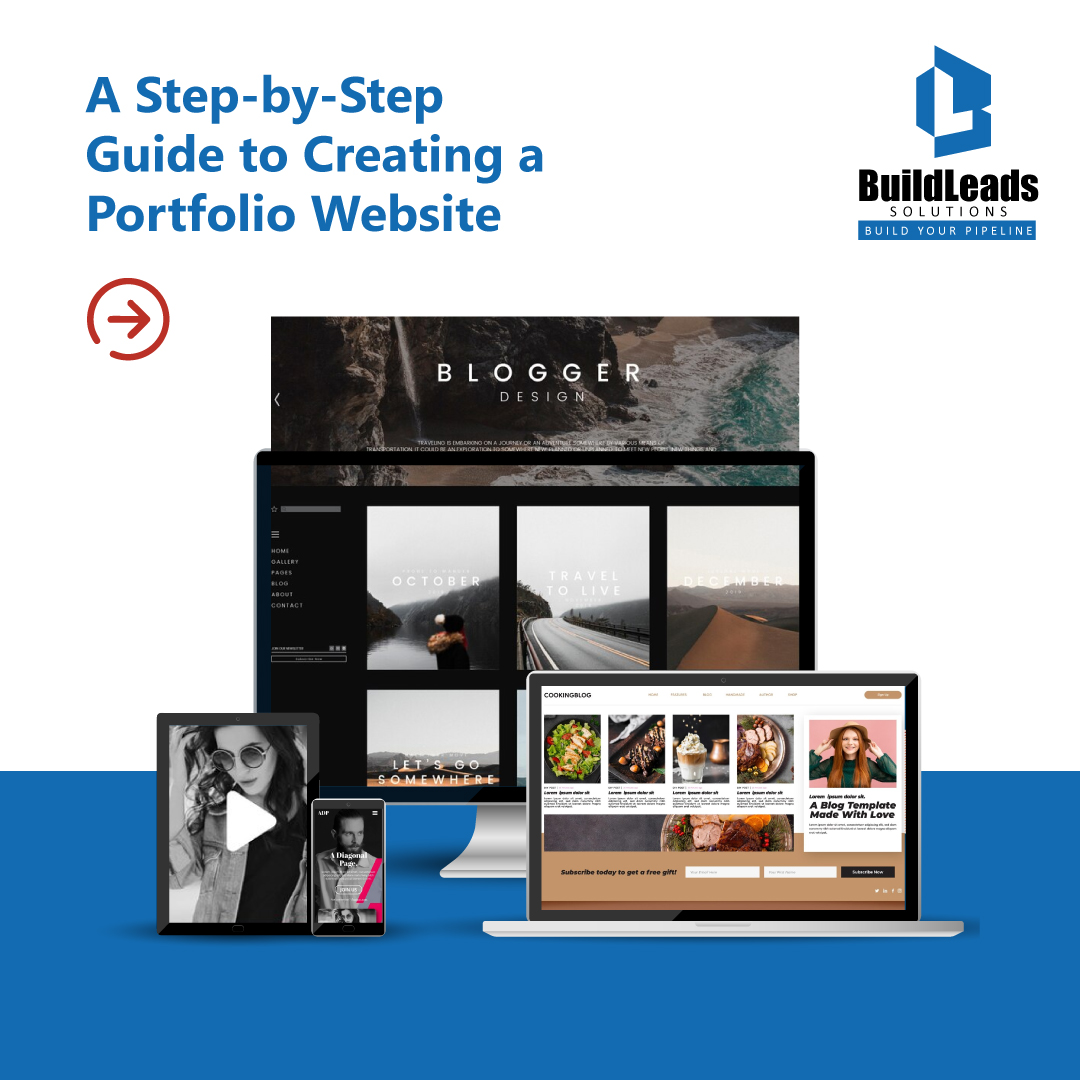
In today’s digital age, a portfolio website is essential for showcasing your work, skills, and accomplishments. Whether you’re a designer, developer, writer, or any other professional, a well-crafted portfolio can help you stand out and attract potential clients or employers. Here’s a comprehensive, step-by-step guide to creating an impressive portfolio website.
Step 1: Define Your Goals and Audience
Before you start building your portfolio, it’s crucial to define your goals and understand your target audience. Ask yourself:
- What do you want to achieve with your portfolio?
- Who is your ideal audience?
- What kind of projects or work do you want to showcase?
Having clear goals and a defined audience will guide your design and content decisions.
Step 2: Choose the Right Platform
Selecting the right platform for your portfolio website is key. There are several options available, including:
- Website Builders: Platforms like Wix, Squarespace, and Weebly offer easy-to-use drag-and-drop interfaces.
- Content Management Systems (CMS): WordPress and Joomla provide more flexibility and customization options.
- Static Site Generators: Tools like Jekyll and Hugo are great for developers who prefer to build from scratch.
- Choose a platform that aligns with your technical skills and offers the features you need.
Step 3: Pick a Domain Name and Hosting
Your domain name is your digital identity, so choose one that is memorable, relevant, and professional. Once you’ve decided on a domain name, you’ll need a reliable hosting provider to ensure your site is always accessible. Popular hosting services include Bluehost, SiteGround, and HostGator.
Step 4: Plan Your Site Structure
A well-organized site structure is vital for a positive user experience. Common sections for a portfolio website include:
- Home: A brief introduction and overview of your portfolio.
- About: Information about yourself, your background, and your skills.
- Portfolio: A showcase of your work, projects, and accomplishments.
- Blog: Optional, but can be great for sharing insights and updates.
- Contact: How visitors can get in touch with you.
Step 5: Design Your Website
The design of your portfolio should reflect your personal brand and be visually appealing. Here are some design tips:
- Keep it Simple: A clean, minimalist design is often more effective.
- Use High-Quality Images: Showcase your work with professional photos and graphics.
- Consistent Branding: Use consistent fonts, colors, and logos throughout your site.
- Responsive Design: Ensure your site looks great on all devices, including mobile phones and tablets.
If you’re not confident in your design skills, consider using a pre-designed template.
Step 6: Create Compelling Content
Content is the heart of your portfolio. Here’s what to include
- Projects: Detailed descriptions of your work, including images, videos, and links.
- Case Studies: In-depth analyses of specific projects, highlighting your process and results.
- Testimonials: Quotes from clients or colleagues that speak to your skills and professionalism.
- Blog Posts: Optional articles related to your industry, showcasing your expertise and thought leadership.
Ensure your content is well-written, error-free, and optimized for search engines (SEO).
Step 7: Optimize for SEO
To attract visitors, your portfolio needs to be discoverable on search engines like Google. Here are some basic SEO tips:
- Keywords: Use relevant keywords throughout your content, especially in titles and headings.
- Meta Tags: Write compelling meta descriptions and use alt tags for images.
- Internal Linking: Link to other pages on your site to improve navigation and SEO.
- Backlinks: Obtain links from reputable sites to boost your domain authority..
- Regularly update your site with fresh content to keep it relevant.
Step 8: Test and Launch
Before launching your site, thoroughly test it to ensure everything works correctly. Check for:
- Broken Links: Ensure all links are functional.
- Responsive Design: Test your site on various devices and browsers.
- Loading Speed: Optimize images and use caching to improve load times.
- Usability: Ensure easy navigation and a user-friendly interface.
Once you’re confident in your site’s performance, it’s time to go live!
Step 9: Promote Your Portfolio
After launching, promote your portfolio to reach your target audience:
- Social Media: Share your site on LinkedIn, Twitter, Facebook, and other platforms.
- Networking: Include your portfolio link in your email signature and business cards.
- Guest Blogging: Write articles for industry blogs and include a link to your site.
- SEO: Continue optimizing your site and creating content to attract organic traffic.
Conclusion
Creating a portfolio website is a powerful way to showcase your work and attract new opportunities. By following these steps, you can build a professional, visually appealing, and effective portfolio that highlights your skills and achievements. Start today, and watch your online presence grow!